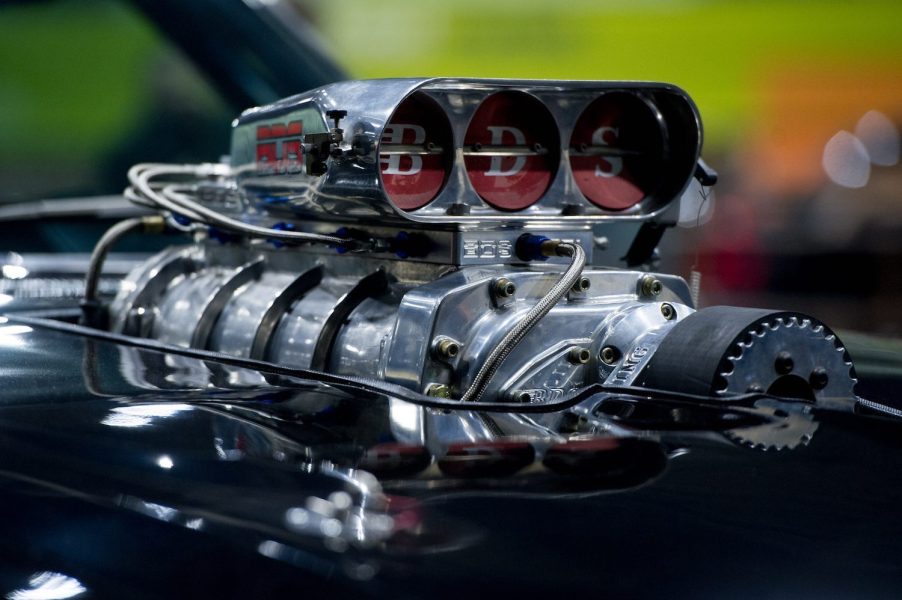
The Fastest ‘Fast and Furious’ Charger Ever
Vin Diesel’s Dominic Toretto is defined by his cars. Dom’s Charger in the first Fast and Furious film is a 1970 R/T capable of laying down a 9-second 1/4-miles. It is easily one of the best cars of the franchise. But as the heists become more extreme with each new Fast Saga film, so does Dom’s Charger. Recent Chargers include a custom AWD “ice charger” and a lifted off-road Charger designed to drop from a plane. But the latest film, The Fast Saga: F9, features the fastest Fast and Furious Charger ever built.
Speedkore’s custom mid-engine Charger 500

Dennis McCarthy is a picture car coordinator at Universal Studios. His shop, Vehicle Effects, produced the custom cars for the past seven Fast Saga films.
On MotorTrend, McCarthy said he always looks for inspiration at places such as SEMA. Recently, a Mustang built by Speedkore Performance caught his eye. The classic car had been converted to a mid-engine setup–similar to a supercar–for better weight distribution and handling.
When McCarthy asked the folks at Wisconsin-based Speedkore if they could build a Fast and Furious Charger, the team was thrilled. McCarthy asked them to build him a chassis and body that he could finish in his shop. He requested they push the front axle as far forward as possible and lower the car dramatically.
Speedkore built a pair of custom chassis. Each is set up for a mid-engine, putting power through a Lamborghini transaxle. Both are true three-pedal manuals. Speedkore also poured custom carbon fiber bodies for their mid-engine cars and several sacrificial stunt cars. McCarthy and Speedkore designed a wide body inspired by the 1968 Charger 500. This is because the aerodynamic NASCAR homologation Dodge featured a rear window flush with the rear pillars. This setup allowed maximum room for a mid-engine layout.
Dennis McCarthy finished the mid-engine Fast and Furious Charger

Dodge provided McCarthy with Hellcat crate engines to install in the Speedkore chassis. McCarthy sent these two V8s off to Performance Tech for a more aggressive supercharger pully and a 110-octane race gas tune. The resulting engines produce 800 horsepower or more.
McCarthy hired Rich Waitas of Magnaflow performance exhaust to build systems with custom headers, exhaust pipes designed to clear the transaxle, and hidden exhaust tips placed behind the rear bumper. McCarthy installed an 8-gallon fuel cell at the front of each car. Then, he finished the cars off with racing-inspired interiors. He recalls looking to 1960 cars such as the Ford GT40 for inspiration and settling on low buckets and a flat instrument panel with analog gauges.
McCarthy sent these two “hero cars” to Edinburgh, Scotland, and Tbilisi, Georgia. The mid-engine Chargers were used to film close-ups and interior shots of Vin Diesel driving. They both survived filming without a scratch. McCarthy said the mid-engine layout gives these cars a “64 percent rear weight bias” and called them, “without a doubt the fastest Charger we’ve built.”
It’s no secret that the Fast and Furious movies wreck an insane amount of cars. For this reason, McCarthy builds a fleet of identical chassis with Chevrolet LS V8s, automatic transmissions, and Ford 9-inch rear ends. He then fits various bodies to these chassis for the stunt crew to flog and destroy. In this way, McCarthy and his crew assemble 180 or more vehicles in several months for each Fast and Furious film. Several standard chassis received Speedkore’s mid-engine Charger bodies to make sacrificial cars for the more extreme stunts.
Next, find out why Dom’s first Charger is not the one you think, or see the mid-engine F9 Charger in action in the video below:






